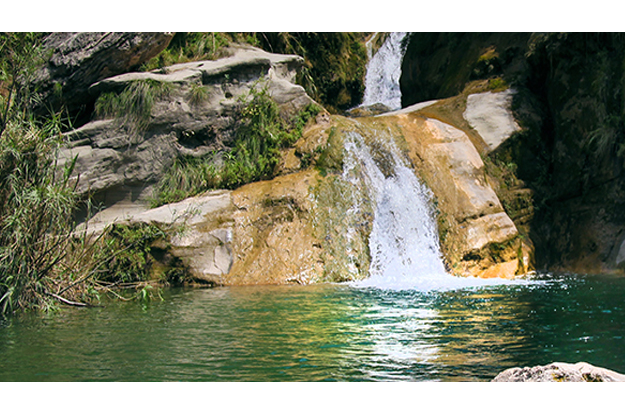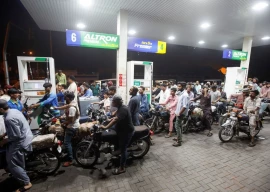
The rugged mountains of the Soon Valley in the Salt Range of the Pothohar region have captured the attention of researchers, seeking nature-based solutions to preserve rainwater and treat wastewater.
This unique cup-shaped Soon Valley, famous for mining activities, has transformed into a wetland complex, comprising various lakes, including Khabheki, Jhalar, and Uchali, all of which are part of the Ramsar Convention and collectively known as the Uchali Complex.
The valley's lower temperature compared to the federal capital makes it an ideal location for off-season crop cultivation.
The Institute of Urbanism recently organised an exposure visit for journalists, shedding light on the strategies employed by the Worldwide Fund for Nature (WWF-Pakistan) to address the escalating water demand and shortage. Concurrently, the Poverty Alleviation and Social Safety Division conducted a study to explore low-cost earning schemes through off-season crop cultivation. Khabheki Lake, a saltwater reservoir, receives an average annual rainfall of 2,200 millimeters.
The bowl-shaped lake, encompassed by majestic mountains, has garnered significant attention for its terrain and its role as a stopover for migratory birds. The WWF-Pakistan has established an office at the lake to oversee conservation efforts, explore groundwater storage possibilities, and promote the protection of natural reserves.
Umar Bin Khalid, an environmental expert at the WWF-Pakistan Khabheki Lake office, explained that the focus on wastewater and greywater treatment initiatives in Soon Valley stemmed from its potential for cultivatable land. Due to increased off-season vegetable cultivation, local farmers' water demands have risen, leading to excessive drilling and a decline in groundwater levels, which have dropped below 400 feet.
Under the Ramsar Convention of 1974, sites crucial for migratory birds are designated as protected lands. The WWF is actively engaged in freshwater replenishment and preservation projects in Soon Valley.
Rainwater harvesting systems have been installed at the household level, primarily in areas lacking a reliable water supply. This low-cost solution, which varies in cost according to house size, involves water tanks, conveyance systems, filters, and recharge structures.
On average, a rainwater harvesting infrastructure in a five-marla house conserves 60 cubic meters of water. Sixteen units have been installed initially, with a target of 40 units.
Dr Ejaz Ahmed from the Institute of Urbanism shared an interesting fact about Khabheki Lake, mentioning that white-headed ducks used to migrate in large flocks from Siberia during winter and then head to India.
However, the introduction of Tilapia fish by the Punjab Fisheries Department disrupted this pattern, as the fish would bite the ducks' pads, resulting in a decline in their arrival. The adjoining areas of Khoshab, including Mianwali, Chakwal, and Talagang, experience an average rainfall of 600-800 millimeters, with recent calculations recording 570 millimeters of annual rainfall in the region.
Published in The Express Tribune, July 10th, 2023.


















COMMENTS
Comments are moderated and generally will be posted if they are on-topic and not abusive.
For more information, please see our Comments FAQ